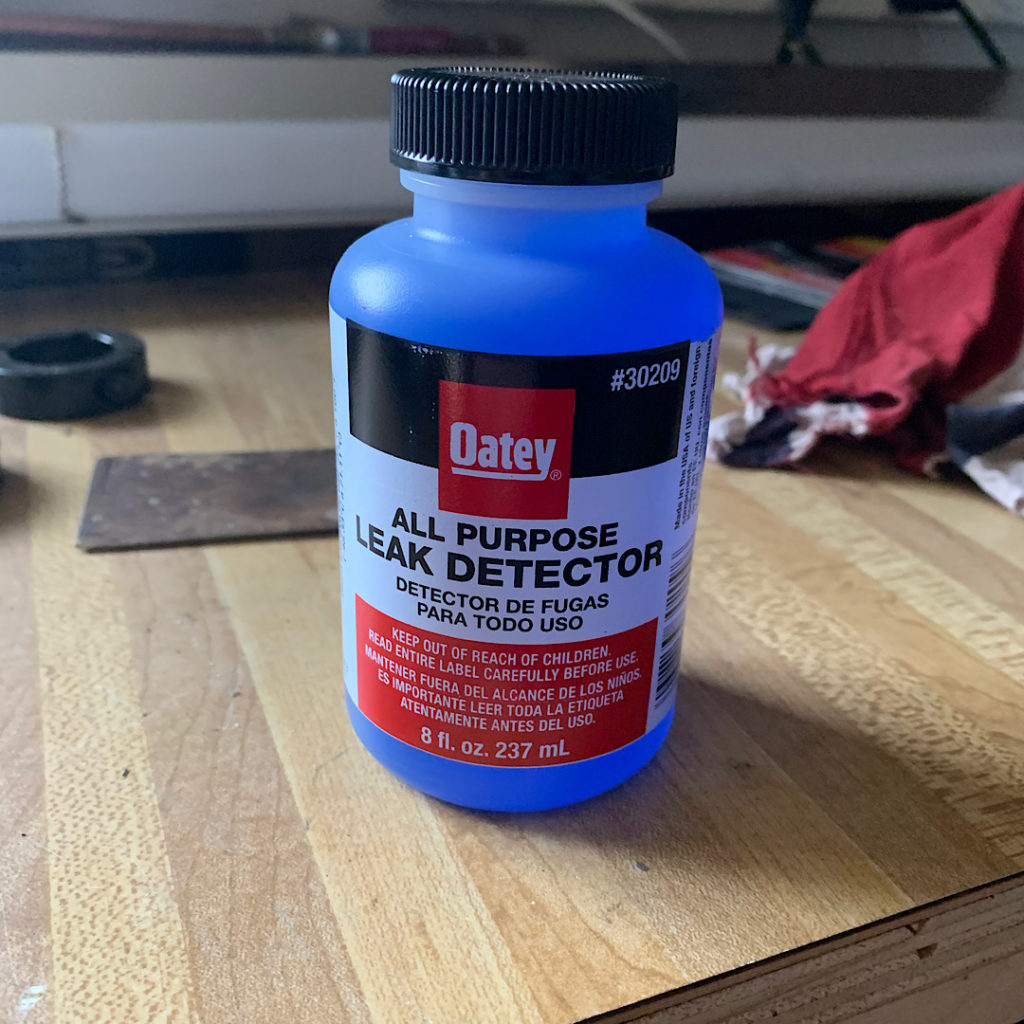When I worked in environmental chemistry. We has an entire lab filled with instruments that used scientific grade gas 24/7 whether we were running tests or not. We had an entire bank of cylinders because we wanted redundancy and not to come in on the weekends.
A leak meant lost analysis time, wasted money and potentially even a compromised sample. They weren’t common but they did happen. When we changed cylinders we did them three at a time. Leaks are serious business in chemical manufacturing but they are something the regular person should know about as well.
What is driving this today? This is triggered by my keg testing. One of the simplest, cheapest and best ways is to do this is use a soap solution. Of course, the this is only works when the piping is under pressure. The good news is that vacuum lines are pretty rare.
When new plumbing is installed, the system is first sealed and pressurized. The system is left overnight and pressure loss is measured overnight. Any amount of loss is clearly a leak. What happens next? You have to find the leak.
The first place to check is all of the fittings or joints. Ninety-nine percent of the time, a leak is sourced from a poor connection. Glued in joints have to be cut and replaced. Screwed in fittings may have too much tape or not enough or are not supposed to have any thread sealant. Compression fittings may be tightened to much or not enough depending on whether they have rubber o-rings or not. Ferrule type fittings sometimes the ferrule is not seated properly. Those have to be replaced.
There are gas detectors for propane or natural gas. Liquids are often observable as drips. As I said above, my go to is a soap solution. The one in the picture below I purchased because I wanted some kind of applicator so I didn’t make a mess all over the place. You can look up recipes online but essentially is is a very dilute soap and water solution. Escaping gas forces bubbles to form at the location of the leak.

To use, open the bottle. It has an applicator brush like PVC cement. You simply wipe the solution around the fitting or suspected area of a leak and look for bubbles. I wanted to check all of the fittings around the regulator and gas lines because I was unsure as to the viability of all the gaskets and O-rings. Turns out that I didn’t find any leaks.
End Your Programming Routine: Leaks can be expensive. But more so than that they are inconvenient. Gas suppliers are open Monday through Friday, 8-5. Imagine that you are in the middle of your party and you lose your CO2. That would be a bummer. It would probably be a good idea to get a second tank for that reason. But again, this is still an experiment at this stage. If I decide to make a full commitment, then I will definitely get a second tank.
Recent Comments